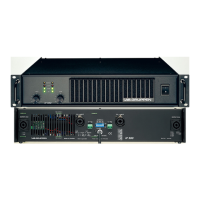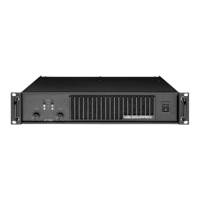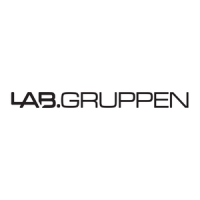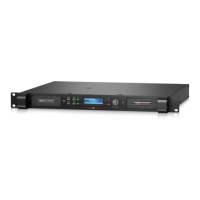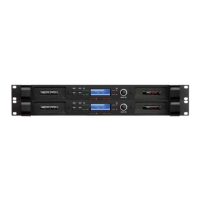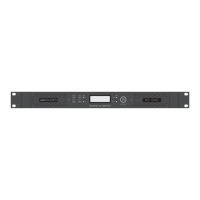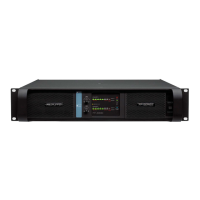Do you have a question about the Lab.gruppen iP Series IP 450 and is the answer not in the manual?
| Amplifier Technology | Class D |
|---|---|
| Number of Channels | 2 |
| Total Harmonic Distortion | < 0.1% |
| THD+N | < 0.1% |
| Signal-to-Noise Ratio | > 100 dB |
| Cooling | Convection |
| Frequency Response | 20 Hz - 20 kHz |
| Input Sensitivity | 1.4 V |
| Input Impedance | 20 kOhm |
| Power Supply | 100-240V, 50/60Hz |
Details amplifier compliance with EMC and Low Voltage Directives, listing applied standards.
Explains warning symbols like lightning and exclamation mark for user safety.
Lists critical precautions for safe operation, installation, and handling of the amplifier.
Guide on safely opening the shipping carton and checking for damage.
Describes the controls, indicators, and features on the amplifier's front panel.
Details the connectors, switches, and features located on the amplifier's rear panel.
Explains how the DIP-switch adjusts input sensitivity and gain levels for channels.
Describes the purpose of the link switch for operation modes like stereo or bridged.
Discusses sensitivity definition, calculation, and DIP-switch options for setup.
Covers stereo, tandem, and bridge mono modes for different channel configurations.
Guidance on rack unit mounting, stacking, and ensuring adequate ventilation.
Correct AC voltage connection, grounding, and power consumption details.
Details for connecting balanced and unbalanced audio sources via XLR and TRS jacks.
Instructions on using Speakon connectors for secure, high-power speaker hookups.
Essential steps before powering on, setting switches, and adjusting controls, including soft-start.
How to use front panel attenuators and interpret PROTECT, CLIP, and Signal Present LEDs.
How the clip limiter prevents signal distortion and protects speakers.
Explains protection from overheating, high-frequency signals, short circuits, and DC voltage.
Recommendations for periodic servicing for long-term reliability, especially in demanding environments.
Guide to diagnosing and resolving typical amplifier issues like no output or thermal protection.
Outlines the 3-year warranty, exclusions, and limitations of liability.
Information on obtaining service and repairs internationally or directly from the factory.
